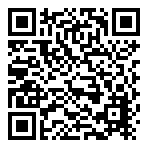CORRECTIVE ACTION FORM SETUP GUIDE
Published 01/11/2025
 A Corrective Action form is commonly linked to an Incident Report and is a follow on form as part of the post incident process. Corrective actions are specifically aimed at improving methods and processes, responding to system failures, minimizing the harm caused by accidents, streamlining workflow, increasing efficiency and effectiveness, and formulation of the appropriate preventive measures.
A Corrective Action form is commonly linked to an Incident Report and is a follow on form as part of the post incident process. Corrective actions are specifically aimed at improving methods and processes, responding to system failures, minimizing the harm caused by accidents, streamlining workflow, increasing efficiency and effectiveness, and formulation of the appropriate preventive measures.
A well constructed corrective action form should encompass key details such as the date of occurrence, the individuals involved, and a comprehensive description of the issue at hand. Furthermore, it should clearly delineate the root cause analysis undertaken to identify the underlying factors contributing to the problem. By incorporating these elements into the form, organizations can gain insights into recurring issues and proactively implement measures to prevent their reoccurrence in the future.
Often the corrective action is the very next follow on process from logging an Incident Report. There might be multiple actions that are assigned from an incident and only once all actions are complete might an incident report form then be closed as one of the possible incident workflows.
View Corrective Action Examples and Tools to setup your own Corrective Action Form

How a Corrective Action Form Works
After the occurrence of an incident in the workplace, you are required to plan, create a team, describe the problem, take the interim containment actions, analyze the root causes of the problem, formulate the necessary corrective actions, and then implement them. A follow up is always recommended to ensure that the plan is effective. Establish any necessary alterations to prevent the occurrence of such-like conformity in the future.
It's important in any corrective action workflow to have a process that informs your employees of any changes as a result of the corrective action in order to keep them updated and express your commitment to healthy workplace practices.
It empowers both employees and management to collaboratively address challenges in a structured manner while ensuring that lessons learned are leveraged for ongoing process improvement. Ultimately, by embracing this proactive approach to identifying and resolving issues, businesses can cultivate a culture of continuous learning and enhancement.
What you might include in a Corrective Action Report Form
To start, consider including a section for identifying the individual or team responsible for addressing the issue. This could involve capturing names, titles, and contact information to ensure clear accountability. Including a detailed description of the problem and its impact is crucial. This should encompass specifics such as dates, times, and any relevant documentation to provide context for the corrective action. Another essential field to incorporate is a thorough analysis of the root cause of the issue. This involves delving into contributing factors and underlying reasons to prevent recurrence in the future. Providing space for proposed solutions and action plans allows for proactive steps toward resolution. This could involve outlining steps, deadlines, and expected outcomes to guide the corrective process effectively.
A best practice corrective action form might include the following high level information:
- Individual and team responsibilities
- Formal documentation to attach
- A clear description of the identified problem at hand.
- Definition of the desired state of the organization and immediate solutions for improvement
- A list of the procedures that need to be implemented to shift from the problematic situation towards the desired state.
After the implementation of the corrective action plan, put in place preventive actions; the measures that usually eliminate the potential root causes of the problems.
Once nonconformity or an incident occurs in the workplace, the management of the organization needs to take the necessary steps to fix it. Implementing the necessary corrective actions after the occurrence of an incident ensures that the workplace is very safe, enjoyable, and functional for your employees.
For instance, putting out a fire in an office in the organization is an action for eliminating the fire problem that has occurred. But a corrective action, however, will eliminate the root causes of the issue such as fixing faulty wiring to prevent the occurrence of fire in the future.
Incident investigation analysis from a corrective action
The incident investigation analysis and data will be of no use if you fail to follow up with the corrective procedures for rectifying the root causes of the accidents. The failure to formulate corrective actions just poses the workplace to more accidents and damage which might even lead to costly and severe effects compared to the first occurrence. In addition to that, incidents occurring more than once aren't just accidents but synthetic problems that adversely affect the organization's bottom line, morale, and even its reputation.
DESIGNING A CORRECTIVE ACTION FORM
When building a corrective action form, its important that you capture the right and enough information for the corrective action to be meaningful and contribute to the improved safety of your workplace.
When establishing a corrective action fuction for your reporting, you might include:
Live corrective action register
Real-time registry of all current and outstanding corrective actions
|
|
What happened, why did it happen, why won't it happen again
Who is actioning the corrective action?
|
|
Report forms
Multiple corrective actions required?
|
|
Deep Reporting and Metrics
Deep dive into corrective action analytics and trends
|
VIEW AN EXAMPLE CORRECTIVE ACTION FORM
Simply scan this QR code to view a sample corretive action form:

CREATE YOUR OWN CORRECTIVE ACTION FORM
No two organisations are the same, it's critical that your corrective action form reflects what you need for you specific workplace and custom requirements of your workforce.
Try out the demo above and see how your corrective action process looks via our dedicated corrective action platform. We've got templates, form builders, registries, communication tools and much more!
 A Corrective Action form is commonly linked to an Incident Report and is a follow on form as part of the post incident process. Corrective actions are specifically aimed at improving methods and processes, responding to system failures, minimizing the harm caused by accidents, streamlining workflow, increasing efficiency and effectiveness, and formulation of the appropriate preventive measures.
A Corrective Action form is commonly linked to an Incident Report and is a follow on form as part of the post incident process. Corrective actions are specifically aimed at improving methods and processes, responding to system failures, minimizing the harm caused by accidents, streamlining workflow, increasing efficiency and effectiveness, and formulation of the appropriate preventive measures.

